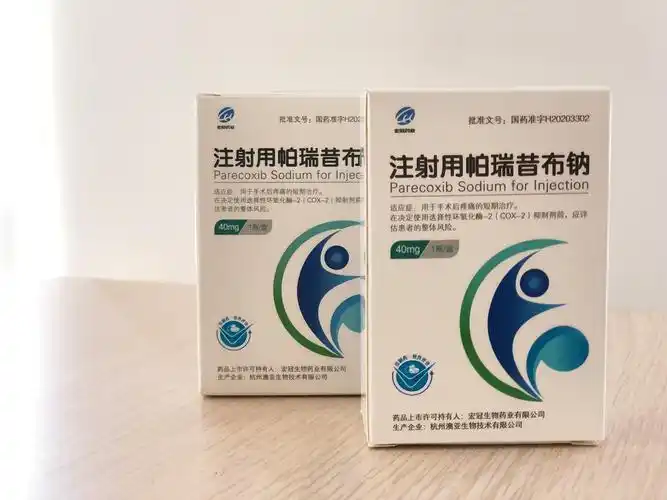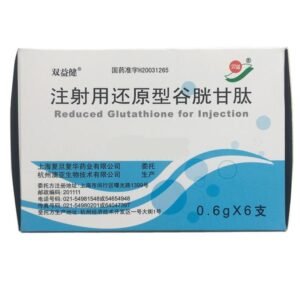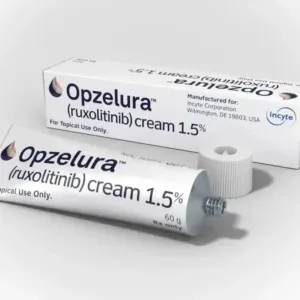Parecoxib Sodium for Injection 帕瑞昔布钠注射液
Parecoxib Sodium
Mainly used for short-term treatment of postoperative pain.
Usage and Dosage:
The recommended dose is: 40 mg, intravenous (IV) or intramuscular (IM) administration, followed by 20 mg or 40 mg at intervals of 6 to 12 hours as needed, with a total daily dose not exceeding 80 mg. Since the risk of cardiovascular events of selective COX-2 inhibitors increases with increasing dose and exposure time, the shortest course of treatment and the lowest daily effective dose should be used as much as possible. There is limited clinical experience with the use of this product for more than three days. It can be directly injected rapidly intravenously or administered through an existing intravenous route. Intramuscular injection should be selected for slow push injection into deep muscles. Since this product can precipitate when mixed with other drugs in the solution, it is strictly forbidden to mix this product with other drugs during dissolution or injection. If parecoxib and other drugs use the same intravenous route, the intravenous route must be fully flushed with a compatible solution before and after the injection of the parecoxib solution. Co-administration with opioid analgesics Opioid analgesics can be used with parecoxib. In all clinical evaluations, parecoxib was administered at fixed intervals, while opioids were administered as needed. Elderly patients Generally, no dose adjustment is required for elderly patients (≥65 years old). However, for elderly patients weighing less than 50 kg, the initial dose of this product should be reduced to half of the conventional recommended dose and the maximum daily dose should be reduced to 40 mg. Hepatic impairment There is currently no clinical experience in patients with severe hepatic impairment (Child-Pugh score: ≥10), so the use of parecoxib in such patients is contraindicated. Generally, no dose adjustment is required for patients with mild hepatic impairment (Child-Pugh score: 5-6). Patients with moderate hepatic impairment (Child-Pugh score: 7-9) should use this product with caution, and the dose should be reduced to half of the conventional recommended dose and the maximum daily dose should be reduced to 40 mg. Renal impairment For patients with severe renal impairment (creatinine clearance: 30 ml/min) or a tendency to fluid retention, the lowest recommended dose (20 mg) should be selected to start treatment and renal function should be closely monitored. Based on the pharmacokinetics of parecoxib, it is not necessary to adjust the dose for patients with mild to moderate renal impairment (creatinine clearance: 30-80 ml/min). Pediatric use The safety and efficacy of parecoxib for children under 18 years of age have not been established. No data are currently available. Therefore, parecoxib is not recommended for use in this population.
Drug contraindications:
Allergy to this product is contraindicated. Liver function impairment is contraindicated. Lactation is contraindicated. Lactation is contraindicated. Lactation is contraindicated. Lactation is contraindicated. Children should use with caution
Related dosage forms:
Injection
View more
Share:
Products
Our offers
Health Classification
Let us work together to protect precious health




























